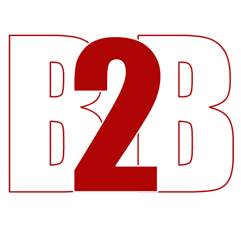Surviving and thriving in the B2B landscape can be challenging. So many things can go wrong, and there’s tremendous pressure from all sides to offer a high-quality product that works.
Fortunately, that’s where this guide can help. It explores some of the strategies you can employ and what you need to do to become a world-leading parts supplier in your niche.
Understand Your Situation
The first step is to understand your situation and know how you stack up versus your competitors. Examining the market helps you make better decisions and allows you to behave strategically. You can adapt your approach to the circumstances and respond to the conditions around you.
Understand Your Customers
At the same time, you also want to understand your customers. Knowing what they truly want puts you at a distinct advantage over your rivals.
For example, you should learn more about delivery times, parts selection, and pricing. All these elements determine what you supply and to whom.
Develop A Strong Manufacturer Network
The first operational stage is to develop a strong manufacturer network. You need partners who can stand by you through easy and tough times, supplying the individual parts you require to send onto your customers.
For example, you might want a manufacturer who can provide you with steel ball components for bicycles and automotive applications,
Once you have these partners in place, look for opportunities to enter into exclusive agreements with them. Get them to distribute parts to you (and only you if possible) to reduce competition.
Make Your Inventory Management System Bomb-Proof
Creating a robust inventory management system is essential for parts suppliers. You need to know what you have in stock at any given time of the day or week so you can ensure you avoid spending too much on warehousing or running out of the items you require to thrive.
Many businesses use so-called “just-in-time” inventory. This strategy reduces the cost further, but it is also more prone to shocks, so you will need a backup plan.
Build Stronger Client Relationships
Another idea is to build stronger client relationships so you have customers who will always buy from you. This guaranteed income reduces your risks and helps you plan better for the future.
Start by offering your clients a personalized service. Ensure you meet their needs, helping to establish trust.
Also, be transparent in your communications. Ensure they know what you can and cannot do. Tell them about any rescheduling or potential delays whenever possible.
Implement Competitive Pricing
You also want to ensure you can offer competitive pricing sustainably. Providing them with a low cost option that also works for you can be highly beneficial.
To implement competitive pricing, look for ways to enhance your efficiency. Ask how you can reduce the cost of your service at every step by ironing out inefficiencies.
Don’t be afraid to invest in these processes if you think you can make a long-term return. The leaner you can make your operations, the more likely clients will choose you as their supplier.
- 4 views


